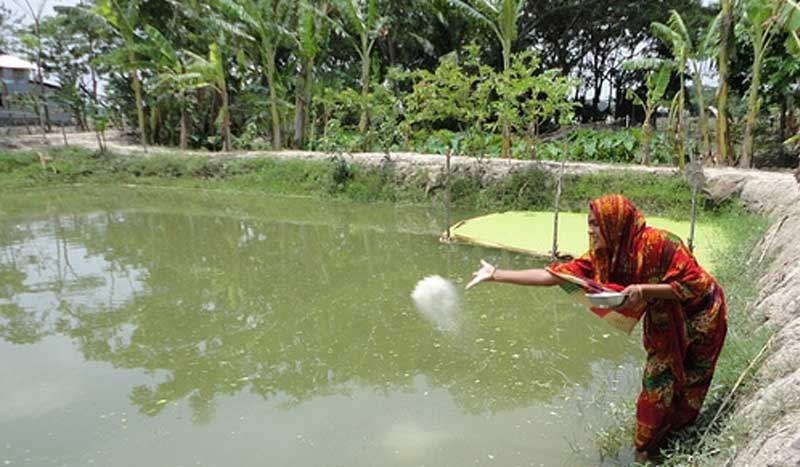
ASM Shahidul Haque![]()
A development worker
Email: shahidulhaque72@gmail.com
This is part ten of a series of blog “A General Outline of Evolution of NGO and Development Work in Bangladesh“. Read previous parts here.
Compared to T. Aman rice, fish culture can be a bit more profitable in Satkhira Sadar Upazila in areas where due to drainage of water (may be as a result of infrastructural improvement, flush flood or less rain fall for last two seasons), T. Aman cultivation became possible after many years. A woman in that area clearly said, she prefers rice production over fish culture and explained the causes. According to her, Rice gives respect to women at house hold level. As she can contribute in postharvest activities (husking, winnowing, cleaning, boiling, drying, packing etc.) that makes her valuable member to the family. Moreover, paddy straw gives her the opportunity to raise a cow, invest a little to raise local poultry (with residuals of rice). All these activities give her opportunity to contribute in family income. In turn, she enjoys the freedom to spend a little money on children (purchase little things- candy or pencil) and herself (e.g. medicine, needle-string, cloth), usually from depleting stored rice or little saved cash earned from homestead production (e.g. selling egg or poultry bird). Female voices are then heard in family level decision making, as an outcome. Violence against women reduces.
On the other hand, she explained, fish culture limits employment opportunity for men (as well as for women). Only few labors are required for inter cultural operation and supervision of even large fish farms. Most of the cases, small households often lease out their land for fish culture (some time can be forced, sometime by creating situation where there is no viable alternative left but to lease out) with little money for multiple years. Men become idle with hard cash at their hand. That makes women vulnerable. Women become insecure. It often leads to violence towards women. Gradually, unsocial event gets prominent. Men starts engaging in gambling, smuggling and other forms of unsafe employment (the international boarder is close and there is demand for labor for smuggling or many other illegal activities with higher wage). The hard cash in hand dries up very quickly. As a result, poverty increases and women face more challenge in preserving respect and dignity.
Moreover, she had interesting observation about personal income vs. family income. She claims that all income should be considered as family income. She explained that it is very normal that woman (wife) keeps all the income generated from IGA by family members (family income). Woman has the right to spend some portion of family income without their husband’s knowledge or consent. Usually they spend on children, education, healthcare, purchasing household items, cloths etc. But if she has to spend a significant amount from the family income, she will discuss with her husband. On the other hand, husbands also do the same thing. They also discuss with woman member (wife) before taking any major expenditure decision. So, according her it is not a proper question to ask who controls the income from rice production, fish cultivation or homestead production. She also said that even if a woman has some saving from her income from homestead production, it is not hidden from husband. She usually spends the amount when there is any urgency and husband asks for it, after all, it is her family; she has exact knowledge about the financial condition of her husband. She feels obliged to support her family.
So, it seems that control over personal income is not that a bigger problem for woman in general, as the ‘gender experts’ (mostly Westerners) like to believe, especially in rural Bangladesh context, where husband and wife are partners in fight against poverty and not enemy in luxury.
Readers’ views and opinions will be much appreciated.

